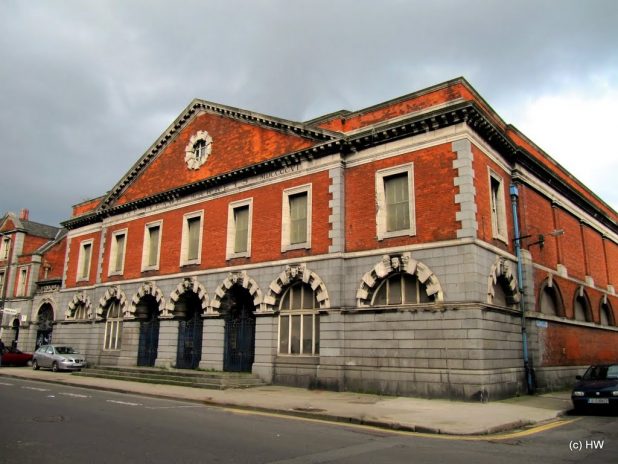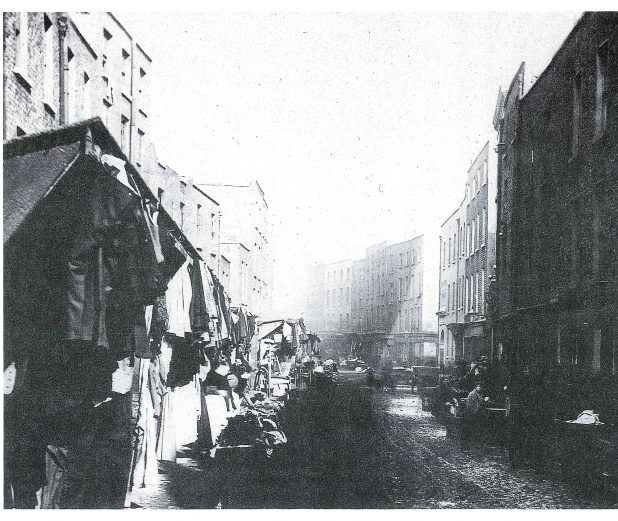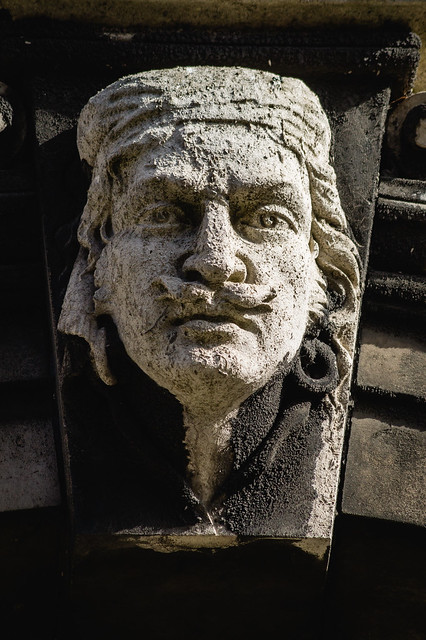The Iveagh Market – A Past
In this first part of a two part article, Ross Murray discusses the origins of the Iveagh Market. One of Dublin’s iconic buildings and forums in times past.
At one point there were numerous markets scattered throughout Dublin, but by the mid nineties most of these disappeared due to modern developments. The Dandelion, The Daisy, Smithfield, The Fish Market (tragically level for a car park) to name but a few. Amongst these demolished halls of Dublin’s mercantile past, the Iveagh still stands, closed and boarded up since 1996. Due to the current dispute between Dublin City Council and Martin Keane over ownership, it may be another few years before its doors are opened once again to the public. Many of us walk by and wonder what its interior was like in its heyday. Sadly many of the men and women that plied their trade there have passed on.
Dublin during the late 19th century was crammed between the canals. Poverty and overcrowding were rife with tenement buildings all over the city. Edward Cecil Guinness recognized this and formed the Iveagh Trust in 1890. Between 1890 and 1899, the trust built affordable housing on numerous sites across Dublin. In 1899, the Dublin Improvement Act was passed allowing the Trust to clear the slums between the Medieval Cathedrals, building the Iveagh buildings and the park which so many of us are familiar and regularly enjoy. Patricks Street was a warren of alleyways, lanes and narrow roads at the time and the west side of the street had numerous stalls selling second hand clothes, fish and vegetables. In response emerging street market, the Iveagh Market was built. Designed as a permanent building to keep the rain off the traders. Although some would still argue that Lady Iveagh didn’t like the traders being so close to St. Patricks Park and the Cathedral. A number of them refused to move and brought the Trust to court. The matter was resolved and the market opened in 1907.
It was designed by Frederick Hicks and built with Portmarnock red brick and Newry Granite with the door and window dressings made from Portland stone. Each of the keystones on Francis St and one on Dean Swift Square were carved with heads representing the nations of the World. Hibernia as the centre keystone and the seven others being Turkey, Europe, Asia, Africa, Americas, Spain and Israel. Although the latter is rumoured to be Lord Iveagh himself with its impish grin and wink.
The site housed two markets and the public washhouse. The main market, accessed from Francis Street, sold second hand clothes on the main floor and furniture on the upper gallery. The rear market sold fish, fruit and vegetables and was accessed from John Dillon Street. The markets were fitted up with stalls and the fish stalls were made from white glazed earthenware. The 1899 Act also included a clause that all second hand clothing for sale was to be disinfected. To that end, the public washhouse was built on the northside of the site with access via Lamb Alley. It was fitted out with 40 of the latest laundry machines. The washhouse also contained four centrifugal wringing machines, 40 hot air drying horses, an iron and mangling room and a waiting room. The disinfecting department was equipped with three high pressure steam disinfectors and two formaline chambers for clothing not able to take the steam treatment.
The Iveagh Market represents a great asset that once was and that can be again with some vision from our Council. In the follow up to this article, I’ve been fortunate to have some lengthy conversations with the Lahiff Family, who were trading in the Iveagh until its closure, who will hopefully provide insight into its day to day running. Stay tuned.











